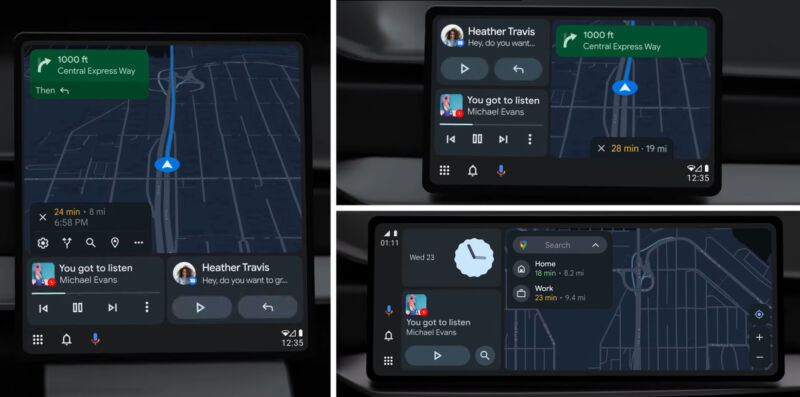
Google / Ron Amadeo
Android Auto, Google’s car interface app for Android, gets a new, more flexible design at Google I/O. Android Auto previously demanded a fairly rigid screen aspect ratio. It couldn’t handle things like large, vertically oriented car screens and would often resort to pillar boxing or letterboxing the user interface to maintain a reasonable layout. Now, Google says the interface is “built to adapt to any screen size” thanks to a new panel design.
Google says that “there are three main functions that drivers prioritize in their cars: navigation, media and communication,” and the new Android Auto design puts each of those interfaces in its own panel. Cards get the largest, the main panel, the media and communication panels are stacked side by side and there is a combo status/navigation bar. To accommodate the million different screen sizes, these items can be arranged in the direction that best fits the car.
An example, close to the current Android Auto setup, shows the combo bar aligned vertically against the side of the screen, followed by a vertical stack of the messaging and media panels, then a large Google Maps panel. Another example of a more vertical screen design shows a large Google Maps panel on top of the messaging and media panels, with the combo bar at the bottom. Things can be arranged to fit.
The new interface will be out “this summer”.

